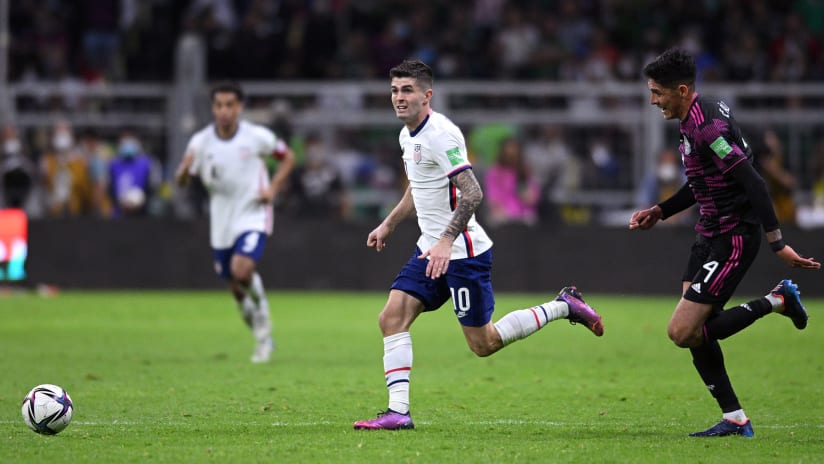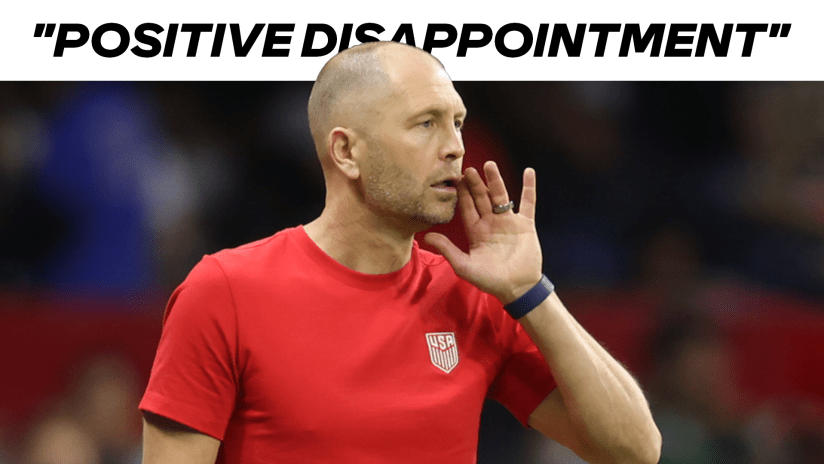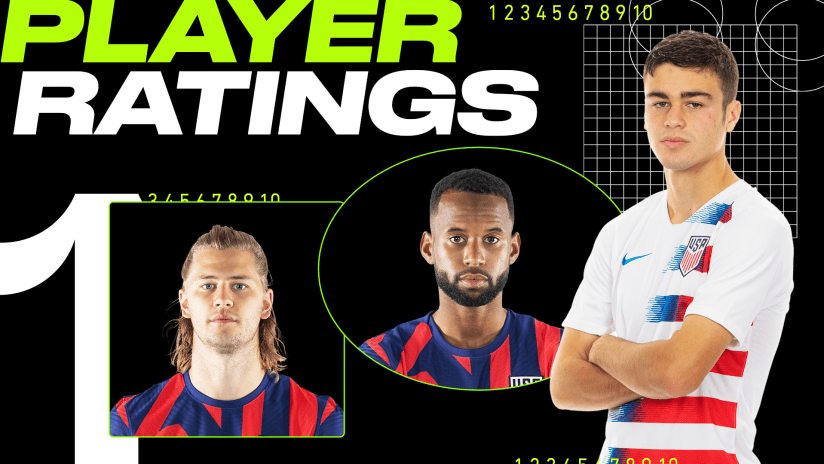MEXICO CITY – If you follow North American soccer at all, you’re probably quite familiar with the exhaustively-documented trials and tribulations that traditionally greet visiting teams in Mexico’s capital.
Very high altitude. Smoggy air. The unrelenting sun overhead. Loud, hostile home crowds. Risk of food- and water-borne microbial illness. Traffic gridlock that can complicate something as basic as a bus trip to the stadium. And of course, the skillful excellence of the home sides, not just the national team but Liga MX clubs like Cruz Azul, Club America and Pumas UNAM.
This cocktail of difficulty helped sustain El Tri’s decades-long dominance of the region, constituting the biggest hurdle for their Concacaf opponents, especially when it came to World Cup qualifying. As the United States finally began to grow into the global game in earnest and challenge Mexico’s supremacy some three decades ago, it made visits to CDMX the stuff of legend for US players, coaches and fans alike.
Things have changed of late, and Thursday’s 0-0 draw between El Tri and the US men’s national team proved as much.
While still winless here in qualifying, the USMNT have now taken points home from three straight trips to the iconic Estadio Azteca, something they did just once in their first 14 WCQ visits all-time. Rather than relief, they had reason to feel disappointed with the result considering the glaring misses by Christian Pulisic and Jordan Pefok.
Notably, the Yanks achieved this with a proud faction of American Outlaws and other traveling supporters cheering them on from a perch in Azteca’s southwest corner. One of the largest-ever such contingents, the group repeatedly made themselves heard when the volume of the El Tri faithful dipped in frustration at their team’s inconsistent performance.
That would’ve been nigh inconceivable not so many years ago. Conversely, there was little sign of the worst examples of Azteca’s vicious, visceral hostility in bygone days.
While it’s certainly possible that I and others missed something in such an enormous facility, there were no signs or reports of bags of urine being thrown, no cups of vomit tossed down at the visitors from on high. No attempted attacks or intimidation – beyond booing their team, of course – directed towards the US supporters, who were heavily guarded as they entered the stadium long before most of the rest of the crowd, and kept well apart from the rest by fencing and massed ranks of Mexican police.
Scan the replies to this tweet, and you’ll see some pretty harsh, even bigoted things being said about Mexicans and their soccer culture. While it’s true that few sporting events in the US feature any such levels of security, it reflected more diligence than danger, necessary precautions in the wake of the tragic, brutal violence that blighted a Liga MX match in Queretaro earlier this month. Nor are they unique to Mexico; you’ll find similar measures in big games around the world.
Such comments are easy to aim at a soccer nation bearing more than its share of flaws and challenges. They do not, however, accurately reflect the current realities, and are indicative of outdated stereotypes that continue to mar the United States’ relations with its neighbors to the south.
The truth is that Thursday felt a lot like a typical MLS or NFL affair, with the added spice of a high-stakes international match. Spectators had myriad options for eating, drinking and socializing, from the cheap seats to luxurious “premium spaces” in the recently-remodeled facility, including US staples like pizza and chicken wings.
Despite Liga MX’s undoubted problems in ensuring family-friendly environments at all their stadiums, there were all generations of fans in the house at Azteca, and plenty of USMNT fans sat outside the supporters’ section, with blue and white sprinkled among the green and “Rosa Mexicano” kits of El Tri.
While it comprises all the complexity of any modern metropolis, CDMX is simply not the same “exotic” locale it once was to estadounidense visitors. English-speakers are everywhere, as are US brands and comforts, and plenty of US cities could take lessons from its public transportation, bicycle infrastructure and environmental sustainability efforts. The gaps between rich, middle-class and poor remain a persistent problem, but we Yanks are hardly in a position to lecture about that, considering that our own numbers have worsened markedly in that department.
Mexico and the United States have become increasingly intertwined in the 21st century, in population, culture, language, media, business and beyond. While cynical demagogues exploit old biases for political gain just like in other places, it’s clear to see that the familiarity has grown. You could hear fans on both sides speaking in both Spanish and English at Azteca as they rubbed shoulders in beer lines and restrooms.
Maybe that’s taken some of the sting out of the bitter soccer rivalry, and maybe that’s quite all right, too. We can, and do, learn from one another.
A key reason it even possible for US fans to be heard on Thursday was the under-50% cap on attendance at the hulking venue, imposed as a punishment for Mexico fans’ repeated use of a longstanding and now-infamous homophobic chant long used to jeer opposing players taking goal kicks and restarts. As FIFA and Concacaf punishments stacked up, authorities have taken a number of steps to quell the ‘grita,’ to use the unhappy shorthand that has arisen as it’s become a thorn in the side of Mexican soccer, with mixed results.
Those in attendance Thursday night were constantly bombarded with visual and vocal directions to replace the slur with “Mexico,” and it mostly seemed to be working, until it popped up on Zack Steffen’s final goal kick of the match, in injury time. That’s quite regrettable, and it also reflected the surging levels of Mexican fans’ frustration with not only their team and its manager, Tata Martino, but the federation they believe has frittered away their status as an elite program by prioritizing revenue above all.
El Tri fans and media tend to devour even their most successful coaches with their sky-high expectations and constant stoking of controversy. And it sure seems like the culture around the USMNT is headed in that direction, too, based on the persistent and at-times venomous dislike of Gregg Berhalter in some quarters despite his tenure featuring more highs than lows (four games unbeaten vs. Mexico, including Nations League and Gold Cup titles). Nor is the US federation above reproach, considering that just last month it exposed fans and players alike to risk of frostbite and worse by staging a home qualifier vs. Honduras in dangerously cold winter conditions in Minnesota in pursuit of extra advantage.
Both nations have ample room for improvement both on and off the field, and the odds tell us that their shortcomings will be probed and exposed by the world’s best in Qatar later this year, which both teams are still on course to reach. And as old as the rivalry between El Tri and the USMNT is, with another WCQ like this not destined until after the 2026 cycle, they can bring out the best in each other, not just the worst, in the years to come.















